All rights reserved. No part of this book may be reproduced or transmitted in any form or by any means, electronic or mechanical, including photocopying, recording or any information storage and retrieval system, without permission in writing from the publisher.
Throughout my career I have enjoyed travelling abroad and learning about the cuisine of various countries. At the same time I have used every opportunity to tell the people I meet overseas about the splendour of British food and cooking, of which I am extremely proud. I think most people would agree that the success of good cooking depends on the skill of the cook but also on the availability of first class ingredients.
This is where we are so fortunate in Britain; we have some of the finest produce in the world. The quality and wide selection of our fish, meat, poultry and game is outstanding and so are our dairy products.
During the Second World War British farmers worked tirelessly to ensure we had adequate supplies of homely vegetables to augment the sparse rationed foods. Nowadays the role of many farmers has changed. They still produce well known vegetables and fruits but, in addition, a wide range of more exotic produce, which until recently, could only be grown abroad.
Do visit one of the many farmers markets held throughout Britain. Marvel at the wonderful selection of vegetables. Why do they look so fresh? Because the journey from the farm to the market is so short. Admire the splendid range of meat and meat products some of which are a speciality of one farm or one area and the interesting British cheeses and baked goods.
For many years British chefs and cooks have shown the world just how skilful they are at producing imaginative dishes from every cuisine, including the finest British fare. We have a wealth of national dishes, some of which have survived for generations; they are part of our British heritage. I have selected the best for this book. It is fascinating that within these relatively small islands, there is such a diversity of food and cooking. The English, Irish, Scots and Welsh all have their specialities. British menus should never be dull.
For centuries cooks have filled their store cupboards with home-made jams and jellies. I have not included a selection in this book, for I give a comprehensive collection in my popular book The Basic Basics Jams, Preserves and Chutneys Handbook (also published by Grub Street).
In this book, I have selected the very best of British recipes. Some are famous, others less well known. They reflect the fine flavours that are typical of our dishes. I have made sure that many of these are ideal for our busy life-style today. Many of the savoury dishes in the opening chapter, some of the soups, fish dishes and salads, are ideal when you are short of time.
A good proportion of British fare is based upon economical food. Sometimes people forget that less expensive fish, cuts of meat and poultry and vegetables have just as much good flavour as the more costly food. Home baking is both delicious and economical too.
Just why have we such a wealth of traditional recipes? As far back as the sixteenth century, it was acknowledged that the Tudor banquets were the most exciting and exotic in Europe. Even during those days, our merchant seamen roamed the world and brought back spices and other exotic foods to enhance our home-produced ingredients. Herbs were grown extensively as they were considered an essential part of cooking as well as being used for medicinal purposes. Todays British cooks are using generous amounts of fresh herbs again. Our involvement in India in the days of the British Empire, and growth of the East India Company, meant we learned something about Indian food and some of those dishes became incorporated into our national cuisine. Our use of spices has also increased recently.
I am proud to compile this British book and I hope readers enjoy using it to prepare the best of British food.
Marguerite Patten
In the past British menus have used the French term hors doeuvre to describe the first course of a meal. Todays more relaxed style means that in many restaurants this is now given as Starters. For family and less formal meals this extra course is often omitted and the meal begins with the main course or a small bowl of soup.
When you do decide to have a starter there is a wealth of food from which to choose. This chapter begins with a selection of potted foods, a delicious speciality of Britain. You could serve small portions of the fish or vegetable dishes in the book, as well as those in this section.
Colourful salads, as on , are a modern favourite, refreshing and low-calorie. Do not be conservative in your choice of ingredients, add seasonal British fruits to enhance both the flavour and health value of your starter salad.

Potted Foods
For centuries good cooks have produced these from a wide variety of ingredients, as this is an excellent way of using surplus food. The recipes are far less complex than European pts and terrines, but that does not impair their flavour. In fact, the relatively few extra ingredients added to the basic food means you have a very definite taste. In the past potted foods were topped, and thus sealed, with a thick layer of melted fat, to exclude the air. This method can still be used, although with todays efficient refrigeration and the current desire to use the minimum of fat in recipes, it can be omitted and the potted food topped with a thick layer of foil.
The method of making potted foods is a simple one the ingredients are pounded with butter and a clever choice of flavourings. Cooks of the past made good use of herbs, spices and even nuts and dried fruits to enhance the taste of the smooth savoury mixture. To achieve the correct texture the foods can be pounded in the traditional manner with a pestle and mortar or with less effort in a food processor. Use this appliance carefully as over-processing results in a sticky texture.
The selection of potted foods in this book ranges from various fish and meats to cheese. Country recipes are often based upon a local cheese and potted cheese is an ideal way of using a mixture of left-over cheeses (see ).
To serve potted foods
Either arrange neat portions, or small individual containers filled with the food, on individual plates with a suitable salad garnish. Hot toast is the usual accompaniment. A sauce is not essential with potted foods but it does make for a more unusual dish. Choose a refreshing Cucumber Sauce (see with potted meat and game or cheese. Potted foods also make excellent sandwich fillings.

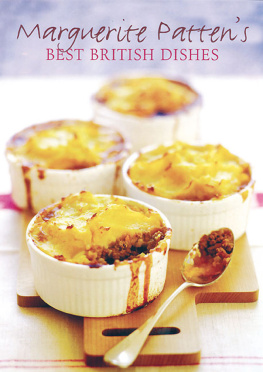
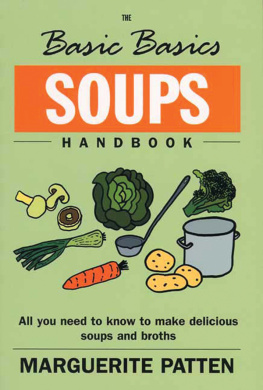
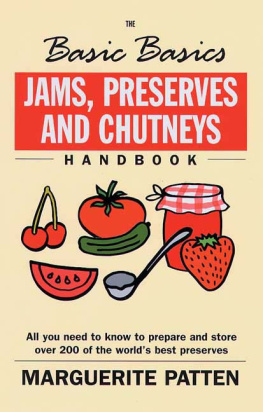
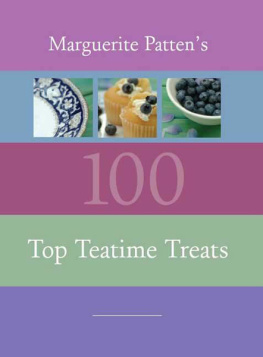
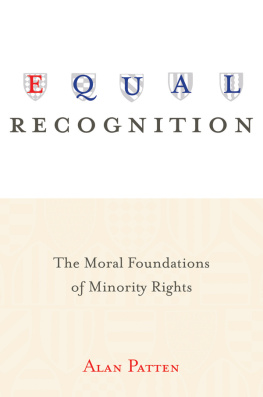
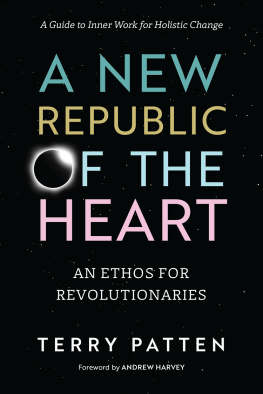
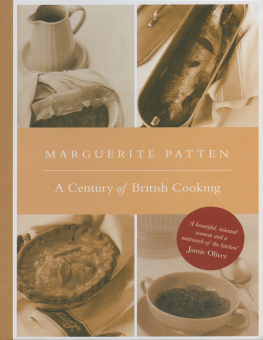
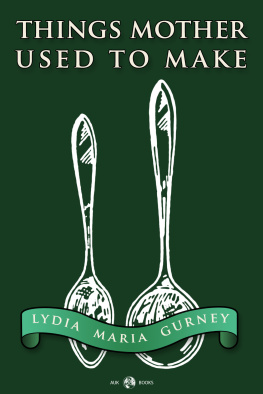

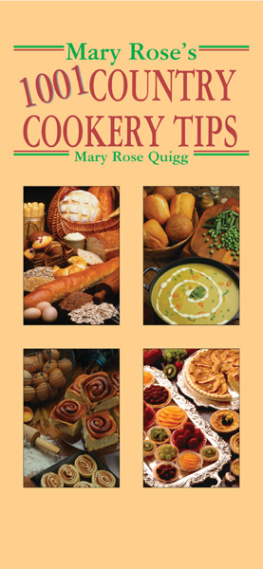
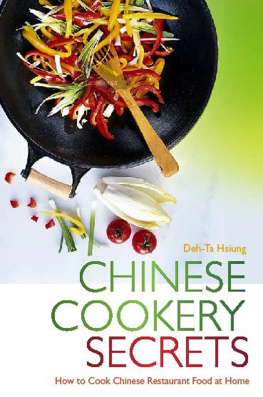
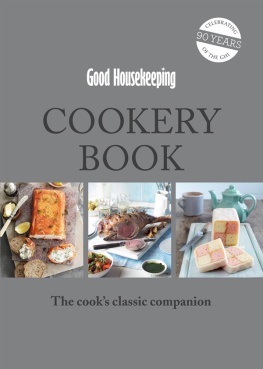
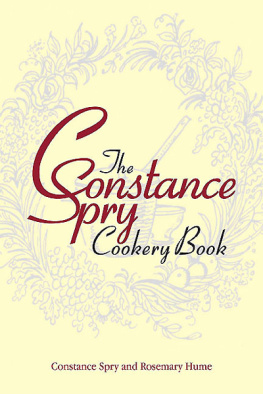
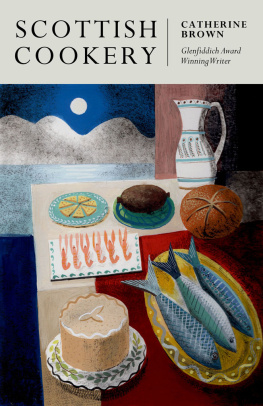
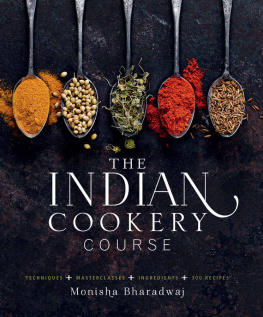


 Potted Foods
Potted Foods